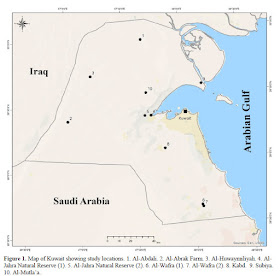Mexico has one of the highest diversity of scorpions in the world. Fernanda Chávez-Samayoa and co-workers have recently published an article on the richness and composition of the scorpion fauna
of Aguascalientes, Mexico.
The article has an identification key for the taxa in this area.
Abstract:
The scorpion fauna of the state of Aguascalientes was revised based on specimens deposited in scientific collections and fieldwork. We evaluated the completeness of the scorpion species inventory of the Colección Zoológica of the Universidad Autónoma de Aguascalientes (CZUAA) based on nonparametric estimators. The results indicate that the number of species increased from 11 to 13, recording for the first time Chihuahuanus glabrimanus (Sissom & Hendrixson, 2005), a psammophilic species, and Centruroides balsasensis Ponce-Saavedra and Francke, 2004, a medically relevant species for public health. Finally, an identification key to the scorpion species of Aguascalientes is provided and a recount of ecological and biological traits of the species herein is studied.
Reference:
Chávez-Samayoa F, Antonio Escoto-Moreno J, González-Santillán E. Richness analysis and completeness of the scorpion fauna of Aguascalientes, Mexico with an identification key to species. Revista Mexicana de Biodiversidad. 2024;95:e955380. [Open Access]
Thanks to Fernanda Chávez-Samayoa for sending me their article!





